
W4DYE-W4GCE Remote Station
On Candlers Mountain - 1963(?)
A mini-memorial
In the early 1960s Warren Middleton
(SK), W4DYE (later W8CXD) and George Rose
(SK), W4GCE,
employees of GE's Communications Department in Lynchburg
collaborated on the construction of an elaborate Amateur Radio remote
station, with repeater capability, located at the GE site on Candlers Mountain just
east of the Mountain Road plant. These hams plus one other,
whom I cannot recall, were the station control operators. Addendum January 2024: Based on information on page 101 of the December 2023 QST the other ham must have been Jim Hall, W4TVI.
Warren worked in Manufacturing and later in Specialty Sales. George was a Design Engineer in Military Communications and later in Personal and Portable Engineering.
The
station had capability on 6Meters, 2
Meters, and 3/4 Meters with control on 3/4 Meters. A five function
Secode selector followed by a stepping switch and a bank
of relays
provided for multiple modes of operation. In the 2 Meter
repeater
mode the station received on 146.34 Mhz and transmitted on 196.94 MHz.
It
probably was the first repeater in the country to use these frequencies
which several GE hams, including these two, were then actively
promoting to hams nationwide as the first activated
frequency pair for 2 Meter
FM repeaters. More about this aspect of ham radio
history is here
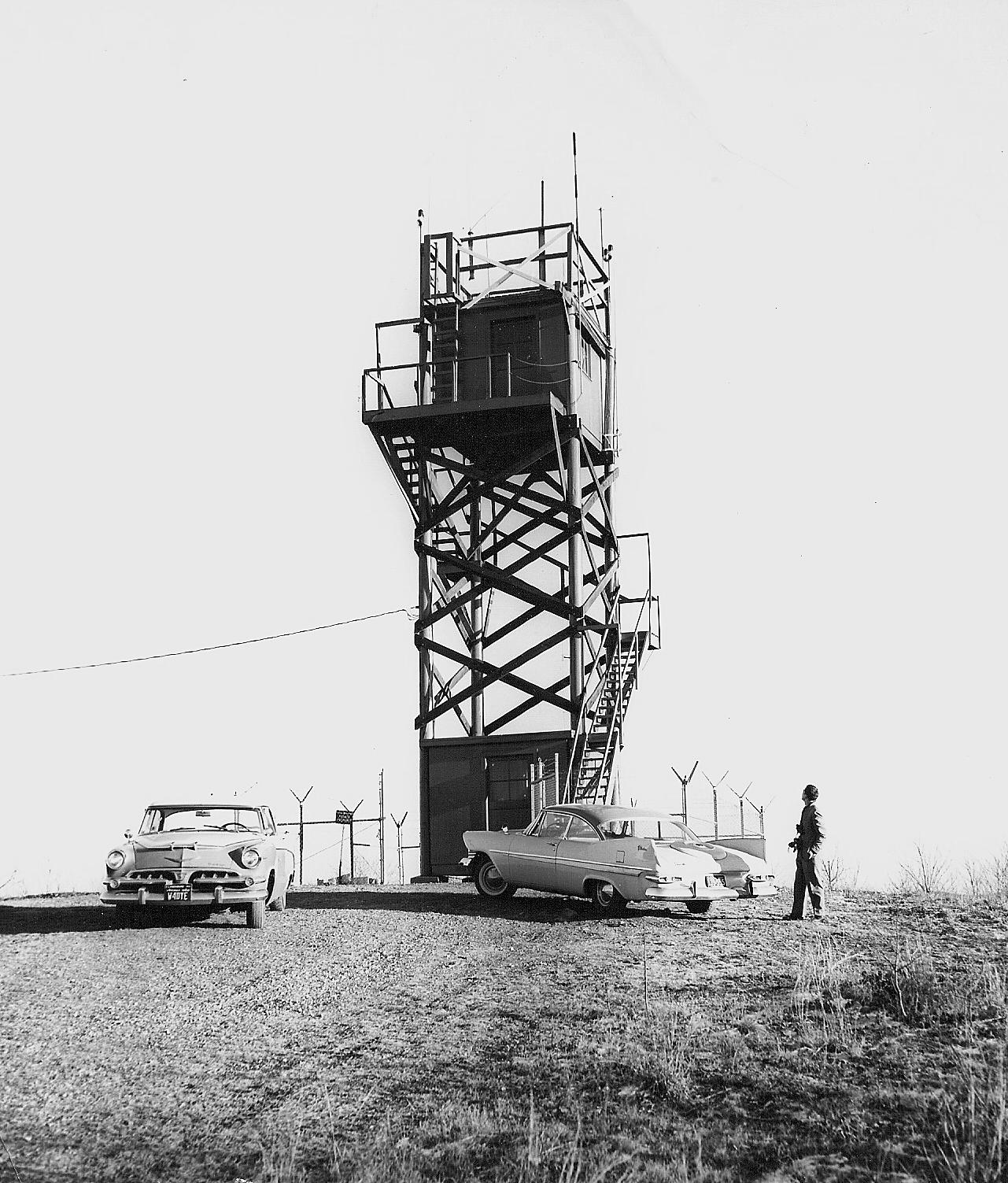
The
The Candlers Mt. Site. The car on the left has Warren's W4DYE license plate. I believe the man is Harry Welch (SK), K4MKO who was manager of GE's Factory Modernized Radio operation. Quote from Warren as recalled in 2009, The Candlers Mountain installation was four telephone poles with a room at the top and a room at the bottom. Commercial equipment (for which the site was constructed) occupied the upper room. My memory is that there was one commercial cabinet in the lower room along with my cabinet. The highest antenna in the picture was the 146.94 RX antenna. The 146.34 TX antenna was made from aluminum clothesline wire mounted on insulators screwed into the telephone pole just above the lower room . This gave enough isolation at 600 KHz to not require a duplexer
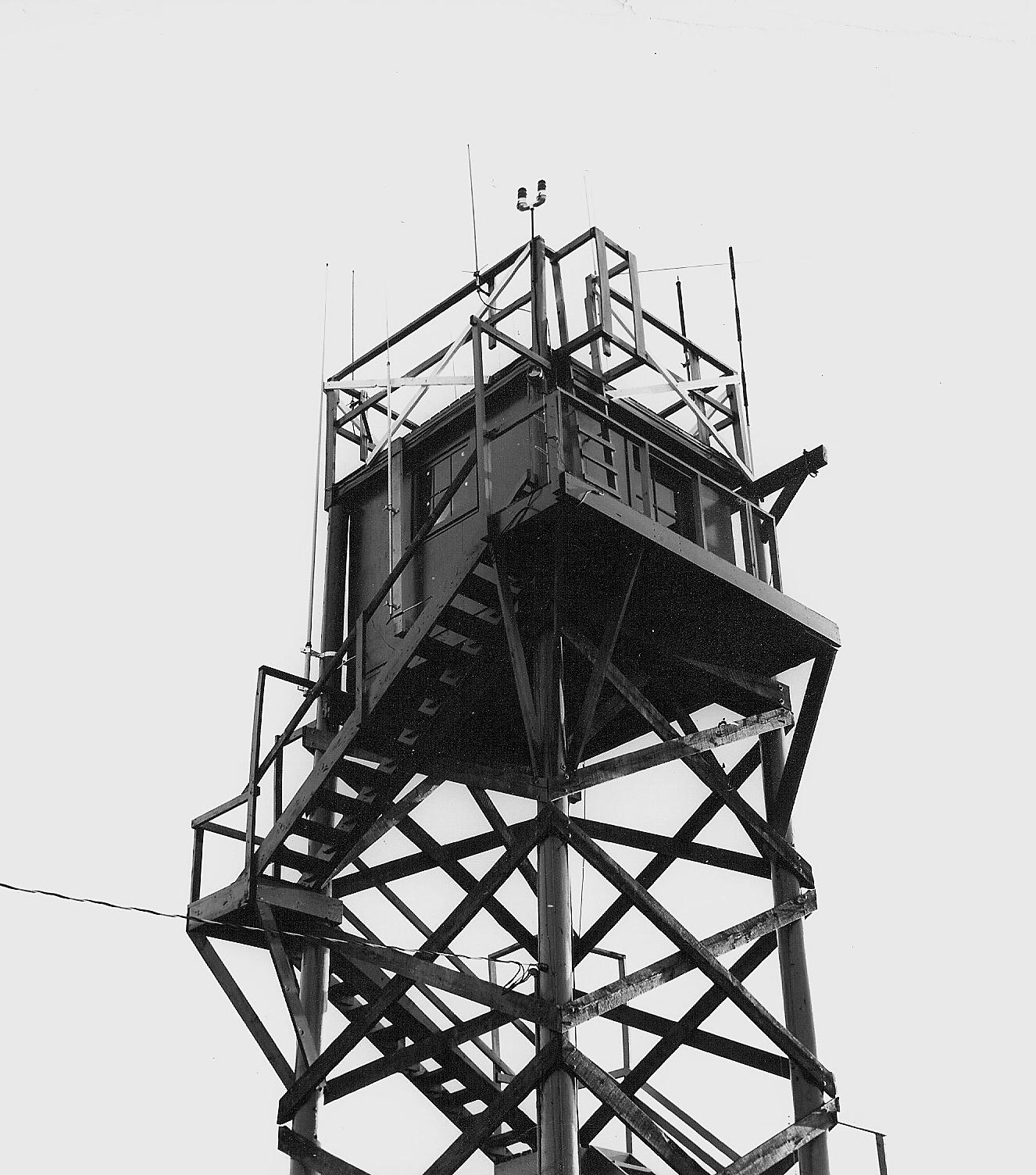
Top of the structure. Quite a view from up there.
Next is a front view of the station cabinet with most of the gear (mostly Progress Line) showing. Again quoting from Warren, This is an 83" cabinet (instead of the usual 69") It is the second version of the station. The first version was in a 69" cabinet. The 83" cabinet with all cabling, audio mixing, and switching equipment was prepared in my basement. Removing the 69" cabinet, placing the 83" cabinet and transferring all the transmitters, receivers, and their power supplies was completed in one afternoon!
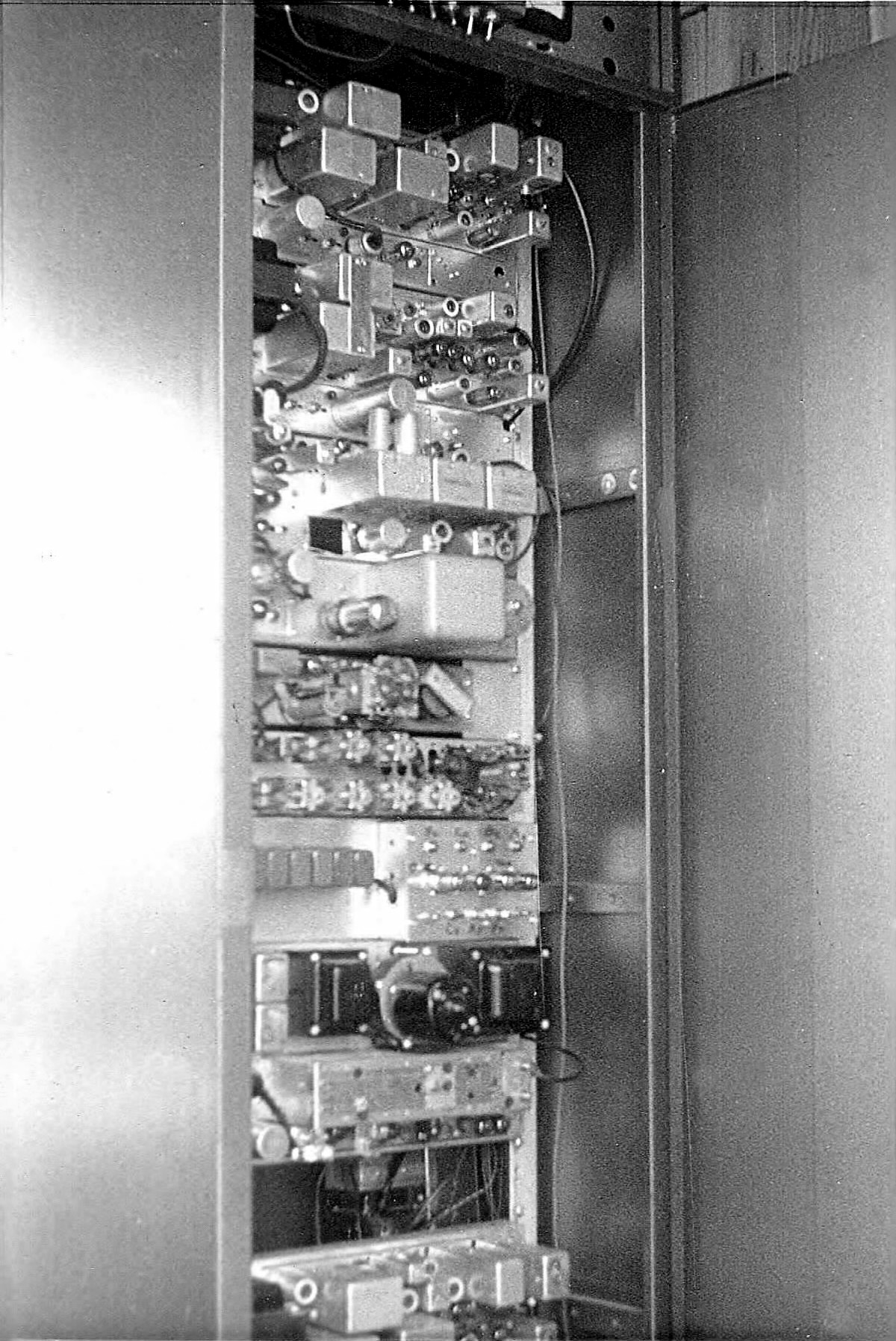
From the top going down: 6M receiver which I think was just stuck there for storage; 146.94 receiver; Pre-Progress 450 receiver and power supply on about 439.1 for control/uplink; Secode 5 function decoder; Homebuilt decoder "expander" using a "telephone type 44" rotary switch to give 40 momentary functions from the Secode; Panel with 8 electrically latching relays and audio switching from the 4 receivers to the 3 transmitters. I am sure there were some GE RR-3 mechanically latching relays also but they don't show in the picture. Downlink transmitter on 449.125; receiver on 52.525/52.64; transmitter on 145.26 (maybe 52.525/52.64); transmitter on 52.525/52.64 (maybe 145.26)
I simply don't know where the second 2 M receiver is located I am satisfied that it isn't in the back because there are four "rack units" open. My 2009 guess is that it is at the top where a 6M receiver is shown.
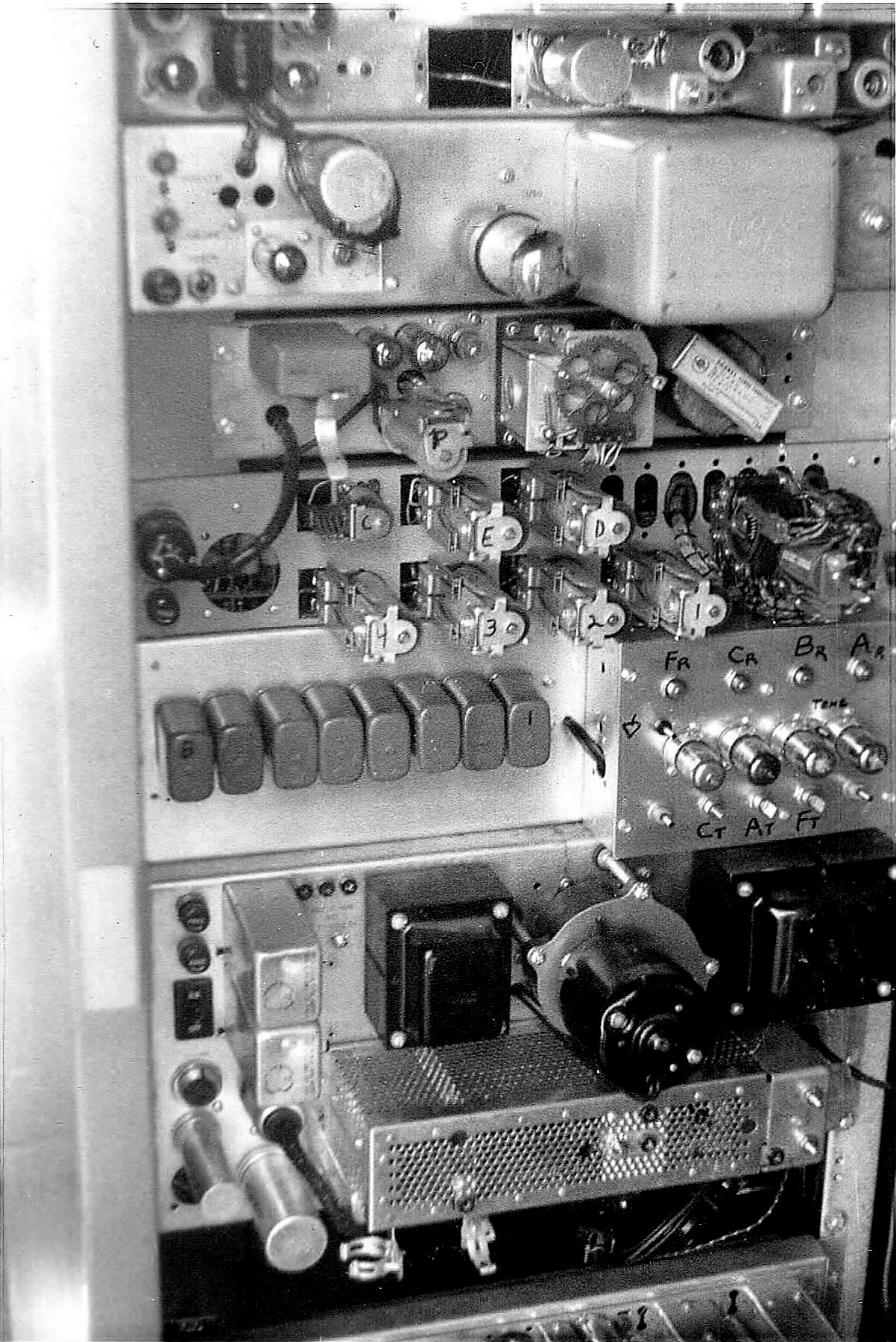
Closeup of the control gear. The Secode 49HS selector (toothed wheel) is on the panel with extender ears. Immediately below the wheel is its 5 function connector block. The panel below it has a bank of open-frame relays with the stepping switch on the right. On the left of the next panel, just above the 3/4 Meter transmitter, is a bank of 8 gray electrically latching relays.
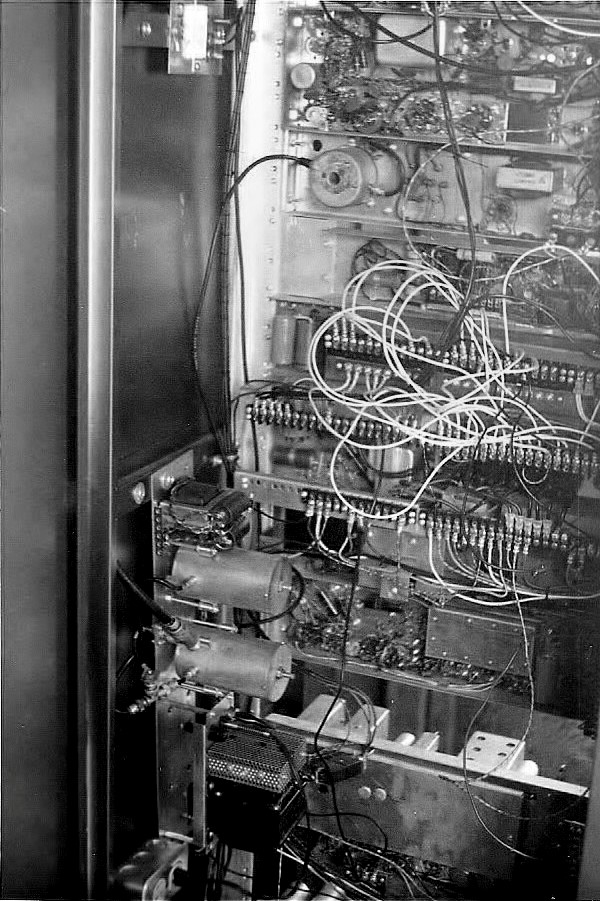
Station cabinet rear view - Somewhat of a rat's nest, but it sure did work The receiver showing through the open space is likely the active 6M receiver.
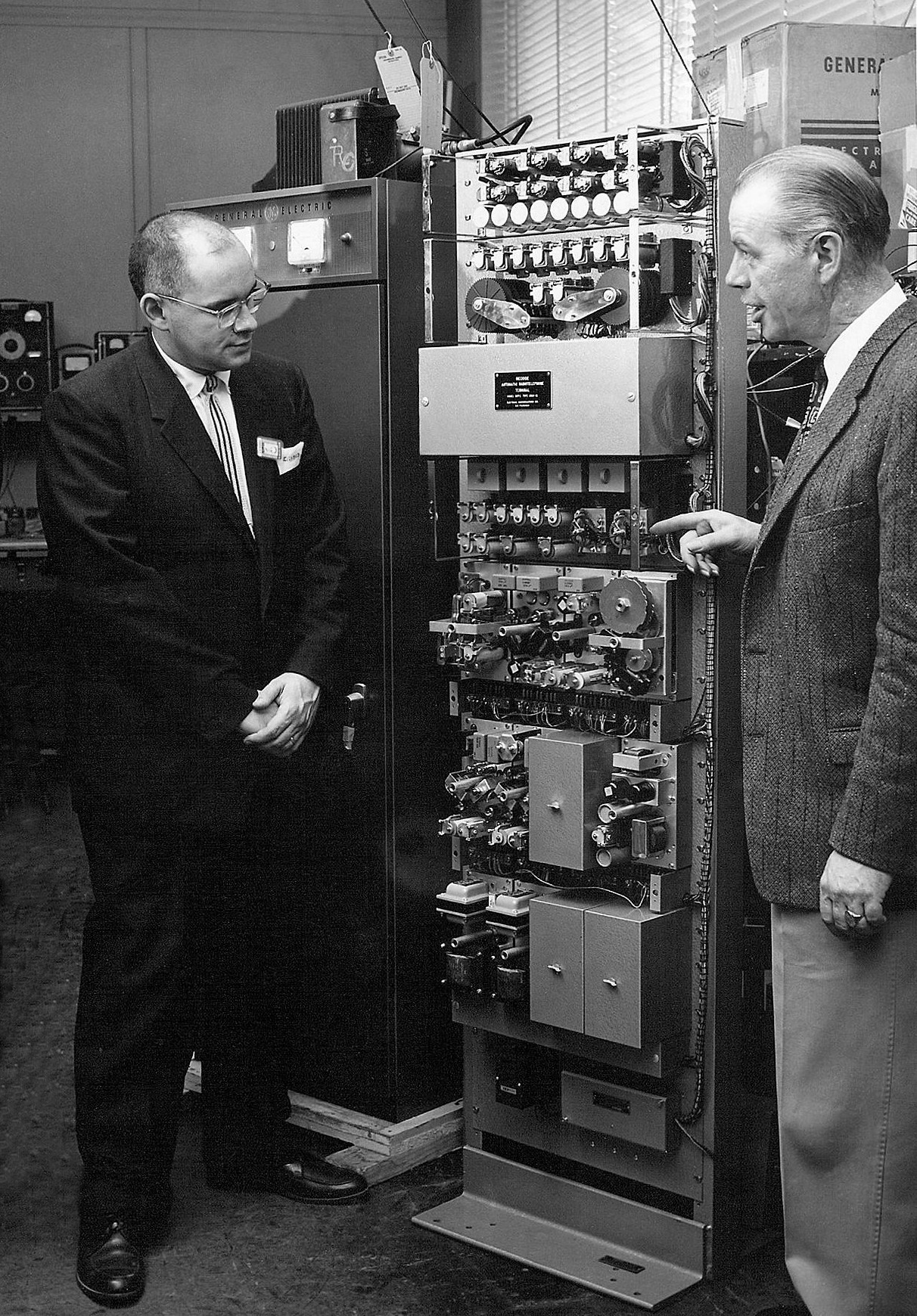
Warren Middleton (on the
left) with a new mobile telephone terminal being installed at
Delcambre, LA. (Late 1960s?) I don't remember the name of the
GE employee on the right.
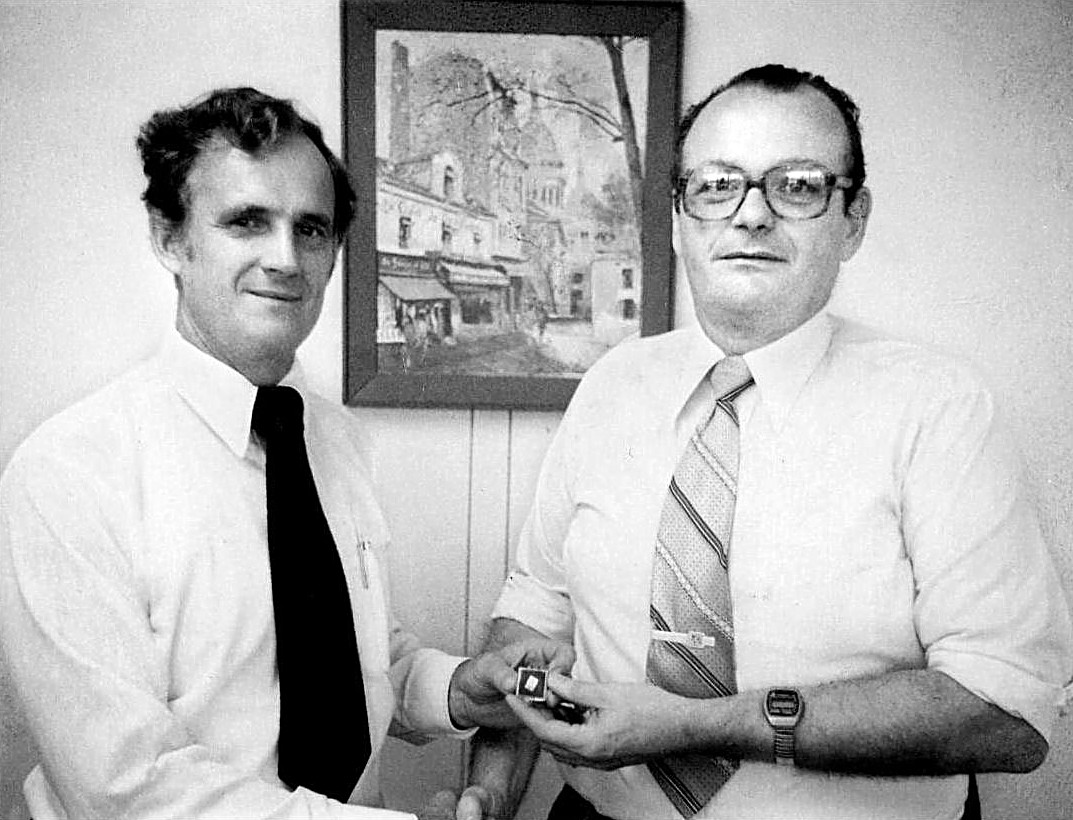
George Rose on the right with Fred Mann. Photo from Welford Jones' collection.

